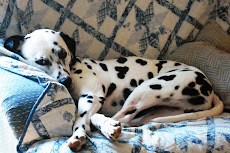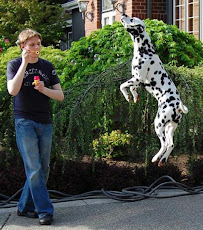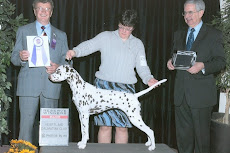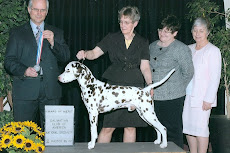
Things are pretty quiet around here this morning. Even Josie & Argus are just laying on the dog beds watching me. Without Jaime here to prod them into action, the dogs went outdoors for awhile and then went back to bed! Wish I could do that as I didn't get to bed until after midnight, but I've got an 8:00 AM meeting - NOT FAIR on a Friday. Roads are bad, so an early start will be required.
Delta did a perfect job and Jaime arrived in Tennessee right on time and was unloaded and available for pickup in half an hour. His new dad said he came out of his crate wagging, greeted a few people, and peed on the grass. Then he chewed a bone in the back of the SUV on his way home. Chewing is a stress reliever for dogs, and many of them chew during or after new experiences. I look forward to hearing of his adventures and seeing pictures of him in his new home.
The picture with this post is Jaime with his new buddy Cosmo. Jaime is doing precisely what young dogs in new homes are supposed to do, showing respect and submission to the senior dog. His posture says he accepts that Cosmo is in charge here. "Doggy social skills" are very important to canines and there are many inherited behaviors that allow dogs to interact peacefully. Because Jaime was raised with two older males and is a sensible sort of guy, he will know how to respond to Cosmo in an appropriate fashion. That's not to say that he won't pester Cosmo at lot, but if he pushes too hard and Cosmo has to come down on him, Jaime will submit and apologize and things will be fine.
Owning multiple dogs and watching the interaction among them is incredibly facinating. Unfortunately, most owners don't understand what they are seeing and often misinterpret the signals. It's important not to step in or correct behavior that is acceptable and appropriate for the situation.
Note to "Jennifer" - because this is my personal blog and not a discussion group, any postings have to be approved by me - which I do if I consider them appropriate. I'm not looking for either advice or validation here, and don't always present all the details when I am using a story to make a point. Please contact me privately if you have any questions. Because I don't have your email address, I can not respond to your comments.















































